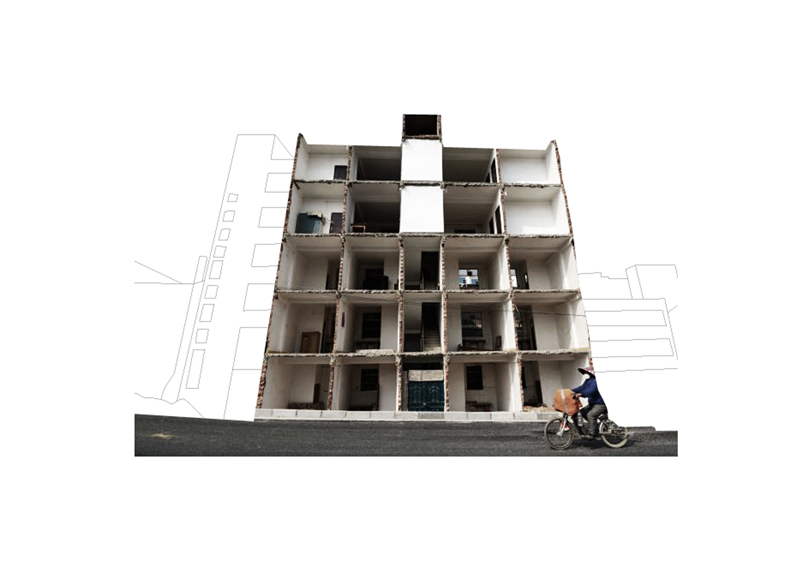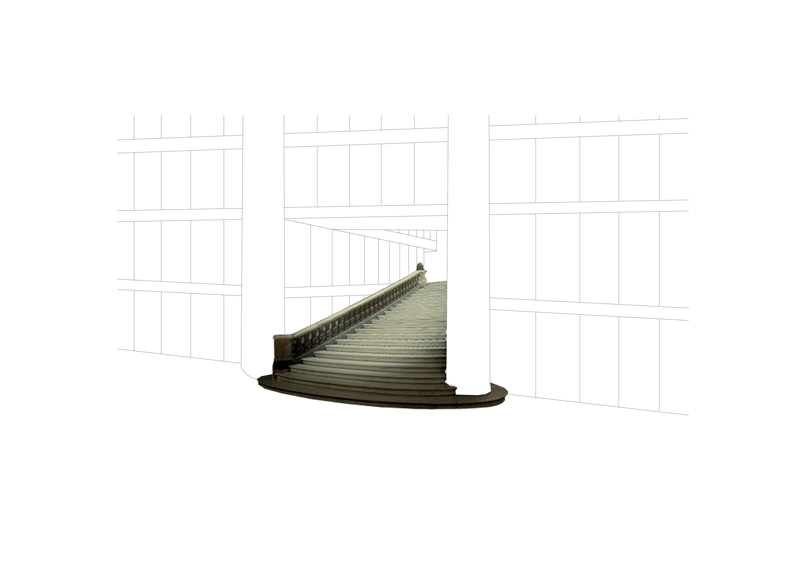W hen a building reaches the end of its useful life, a cycle of events has gone by. By the events occurring around and within the building the building ages and changes physically. The building is “rooted” in its location. During the process of demolition, the aesthetic value of a building and its parts decreases and increases. The process of demolition reveals an unreferenced beauty, exposed to the public.
By viewing the aesthetic effects demolition has on a building and its parts BEFORE, DURING and AFTER its completion, we notice that the scope on which the aesthetic effects are noticed changes in scale from INTERIOR, to BUILDING to CITY.
DEMOLITION CONTINUUM is a manifestation of a series of events occurring through the process of DECONSTRUCTION, DEMOLITION and DESTRUCTION of a building. In order to clearly represent these events an artifact –THE STAIR- is chosen. Through visual representations of the process of demolition, with the focus on this artifact we are able to grasp these stages.
The stair is a remnant of a building that has this presence of perseverance during all the stages of a building’s destruction. It is capable of change during demolition and it is able to reveal the true inner self of the buildings use. The stair, usually being the last thing to be demolished, given its continuous use value through the demolition process, is able to visually tell a detailed story of the processes of deconstruction, demolition and destruction of a building and its elements.
12 Acts of Demolition











